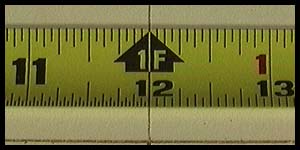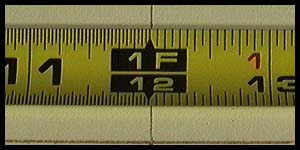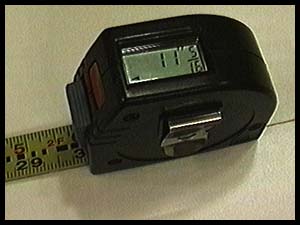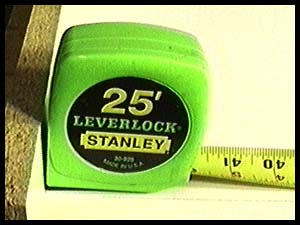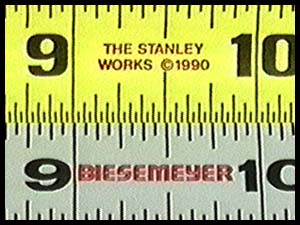

Measuring Strategies - Part I: by Jim Mattson
What is it about tape measures which inspire so little confidence? Why is it that whenever we're faced with critical measuring and cutting, it's easy (and usual) to cut the piece oversized and whittle it down from there? Why do we make so many trips to the table saw so we can nudge ever closer to that optimum length or width? Is it because we're afraid we'll cut our wood too short or too narrow? You bet!
How we get to this point is variable for each woodworker. Some of us don't take the time and care needed for accurate measuring. Like learning to cut dovetails by hand, measure twice and cut once is a pain. For others of us, it seems no matter how meticulously we measure, we still occasionally make mistakes... so we give up. Whenever we're faced with one piece left to finish the job and one piece left on the woodpile, we become stricken with the paralysis of indecision. Our confidence in our measuring and cutting abilities gets exhausted through the blast gates of our minds.
This has been one of my problems for some time. Although I've known that much of my lack of confidence lies in the measuring tool itself, somehow whenever I make a mistake I take the blame. It's never the tool but the craftsperson using it who has failed ... or is it?
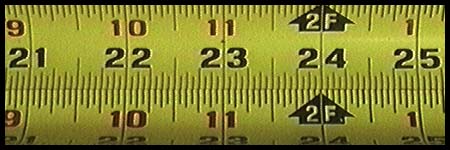
To illustrate a potential problem, the picture above shows two Stanley 25' Powerlock IIs stretched side-by-side. They match up nicely at 21" and 25" but in between they wander off as much as 1/64". Which tape is right?
The implications of this are plain: four 24" wide cabinets might not add up to 8'. Luckily we almost always don't have to meet this level of accuracy, but it explains why it can be so difficult to cut parts accurately without a lot of trial and error.
To find some answers to this problem my research led me to the Sears, Stanley, Lufkin and Starrett websites. To each company I posed the same six questions and after several weeks, Lufkin, a division of Cooper Tools, was the only company to respond. If you'd like to read the questions and Lufkin's response, click here.
To delve into this issue further, a question arose about which are the most accurate tape measures on the market? Is there one available we can use to restore our sagging confidence in the measuring procedure? Operator error notwithstanding, is there one tape measure which can consistently return accurate measurements?
I then took off to Sears and Home Depot to purchase five tape measures, just as you would most likely do. The tools chosen were three 16' tapes and two 25' tapes with a strange newcomer to the fray, the Starrett Digitape which electronically displays it's readings.
I used 16' tapes exclusively for years but lately I've grown accustomed to the 25'ers for the large projects which come my way. I like the stiffness of the blades for measuring inside diagonals and as quickie straight-edges during rough layout. Though they're bulkier to use and hang from a belt, my shop, toolboxes and trucks are littered with them.


